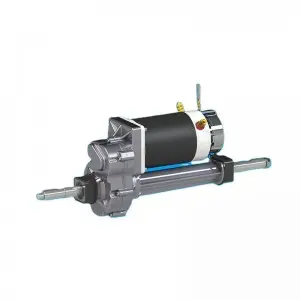When it comes to auto parts, the transaxle plays a vital role in the smooth operation of the vehicle. However, not many people realize the complexity and functionality associated with this important part. One question that often comes up is whether all transaxles have a dipstick. In this blog, we’ll explore the topic of transaxles and delve into the issue at hand while clarifying the importance of a dipstick in this situation.
What is a transaxle?
To truly understand the relevance of a dipstick in a transaxle, it’s crucial to grasp the concept of the transaxle itself. Simply put, a transaxle is a transmission that combines the functions of a transmission and a differential into a single unit. It efficiently transfers power from the engine to the wheels, allowing the vehicle to move forward or backward smoothly. Transaxles are primarily used in front-wheel drive and mid-engine vehicles.
The importance of the dipstick in the transaxle:
The dipstick plays a vital role in the maintenance and proper operation of the transaxle. They make it easy to measure and monitor transaxle fluid levels. Transaxle oil acts as a lubricant, providing necessary cooling and reducing friction within the transaxle unit. Therefore, maintaining proper fluid levels is critical for optimal performance and durability.
Do all transaxles have a dipstick?
The answer to this question is not black and white. Different vehicles equipped with transaxles have different designs, which in turn affects the presence or absence of a dipstick. While some transaxles do have a dipstick, others may not. This variation often depends on the vehicle manufacturer’s design choices.
In modern vehicles, especially those with automatic transmissions and transaxles, manufacturers often remove the dipstick and provide a sealed system instead. These sealing systems are designed to prevent inexperienced owners from incorrectly checking or adding fluids, which could result in potential damage and voiding the warranty. In order to monitor the transaxle fluid level in such a system, specialized tools are required to access and measure the fluid level.
Proper transaxle maintenance:
Whether your vehicle’s transaxle has a dipstick or not, regular maintenance is necessary. If your transaxle has a dipstick, the fluid level must be checked regularly as part of routine maintenance. Typically, vehicle manufacturers provide guidance on when and how often to check and change transaxle oil. Ignoring these recommendations may result in premature transaxle wear and damage.
For vehicles equipped with a sealed transaxle system, it is important to follow the manufacturer’s instructions. They may recommend taking the vehicle to a professional service center for the fluids to be checked and changed, as specialized equipment will most likely be required.
Understanding the role of the transaxle and the importance of the dipstick is beneficial for any vehicle owner. While some transaxles have a dipstick that makes it easy to measure and monitor fluid levels, others have sealed systems that require professional maintenance. Regularly checking the transaxle fluid level and following the manufacturer’s instructions is critical to the longevity and efficient performance of your vehicle.
Post time: Sep-25-2023

